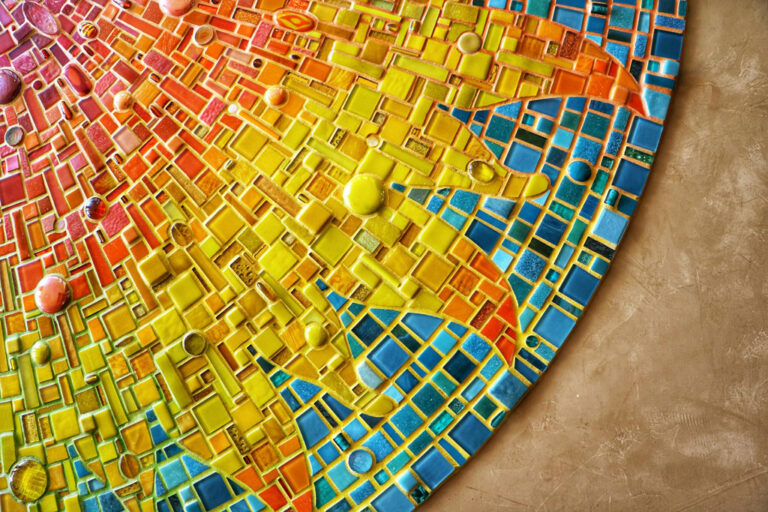An American Association of Geographers?

Naming objects is a time-honored preoccupation among geographers, whether those objects are places, concepts, or discourses. We know that names profoundly convey meaning, reflect the agendas and thinking of those who coin them, and are always contested and occasionally altered (Mumbai/Bombay, Chemnitz/Karl Marx Stadt and Myanmar/Burma come to mind). It’s high time we turned these debates to how we name ourselves. Inter alia, “Association of American Geographers” conveys the sense that we think of our community as composed of American geographers. But the AAG is so much more now, and our name should reflect this.
Our current name made eminent sense in the context where the Association was founded, in Philadelphia on December 29, 1904. (The story is told by Preston James and Geoffrey Martin (1978) The Association of American Geographers: The First Seventy-Five Years. AAG: Washington DC.) William Morris Davis wanted to create an academic association for scholars in the United States who thought of themselves as geographers. Regional groups labeled geographical societies and geographical clubs already existed, as did the American Geographical Society (AGS) and the National Geographical Society (NGS). But these were places where philanthropists and other elites gathered to share their passion for things geographical, rather than gatherings of professional geographers. An attempt to create a sub-group of scholarly geographers within the NGS, “Fellows,” had been rebuffed; it was deemed as implying an un-American class distinction.
After Davis was elected Vice-President of the American Association for the Advancement of Science (AAAS) in 1903, he gave a speech to the AAAS, titled “Geography in the United States.” He advanced the case for a professional society of geographers, which would establish standards for scholarship for a discipline of considerable popular interest. Such a society should restrict membership to persons with a track record of original published research in a sub-field of geography. (The AAAS did have a Section E designated as Geology and Geography, but Davis had experienced this as dominated by geologists disinterested in Geography as a field of scholarship.)
Davis proposed to the AGS that it help form a League of American Geographical Societies as a step toward creating such a professional society, which he proposed naming “the American Geographers Association.” He was rebuffed again, but brought this proposed name to a meeting of potential members convened during the September 1904 IGU meeting in Washington, D.C. The following December, after much debate about who (almost entirely men) would qualify as geographers, an organizational meeting was held at the University of Pennsylvania. At this meeting, it was agreed “at once” to change the name to the Association of American Geographers.
In that context, the city where the Declaration of Independence was drafted, at a moment when the USA was yet to become a global hegemon and the status of being American was taken for granted, and with Geography marginalized as an academic activity (sounds familiar?), the name made sense. Yet the result was that the moniker American was attached to the members rather than the organization or the discipline. In the name of almost every other U.S. American academic association, “American” is attached to the discipline (e.g., the American Geophysical Union, American Sociological Association, American Anthropological Association, American Historical Association, American Meteorological Society, etc.).
Today, the AAG has become far more than a community of American geographers. Many of our members, even among those working in the United States, are not (only) American citizens. Many more attend our annual meetings from outside the United States as our national meetings have become the gathering place for geographers from across the world. The percentage of meeting participants from outside the United States has risen from just 2.8% in 1982, to one fifth by 2006, to one third this year and last.
It is thus time to consider changing our name to the American Association of Geographers. This renaming is not a new idea. Some of my predecessors have argued this (indeed I find myself channeling many of the arguments in Susan Cutter’s February 2001 presidential newsletter column making a similar proposal). Many members from within and beyond the United States also have advocated such a name change (most recently at the 2013 AAG Business Meeting). This particular renaming is also not ideal: “American” has very different, contested meanings across the Americas, and the use of this self-appellation by U.S. Americans often is regarded by other Americans as an, at best unwitting, assertion of U.S. hegemony. We live in an age when brands matter, however, and retaining the initials AAG (rather than, say, USAAG) is a far easier organizational transition to envisage.
Names are invested with all kinds of identities, and no such action should take place without every opportunity for members to have their say. So, while this idea has the unanimous endorsement of the current AAG Council and of past Presidents with whom I have shared it, let us know what you think. Respond [below] to this column, but also participate in an on-line referendum that the Association will organize in the near future. If there is substantial support from across our membership, the Association’s published procedures for a change to its constitution will be initiated. In the absence of such support, the idea will not be further pursued.
Eric Sheppard
Audrey Kobayashi (Past President)
Julie Winkler (Vice President)
Derek Alderman
Ron Hagelman
John Harrington, Jr.
Thomas Maraffa
Bryon Middlekauff
Marilyn Raphael (Treasurer)
Bradley Rundquist
Grant Saff
Michael Scott
Laura Smith
Karen Till
James Tyner
Elizabeth A. Wentz
Richard A. Wright
Jenny Zorn (Secretary)
Ron Abler (Past President, 1985-86)
Kenneth Foote (Past President, 2010-11)
Janice Monk (Past President, 2002-03)
Thomas J. Baerwald (Past President, 2008-09)

